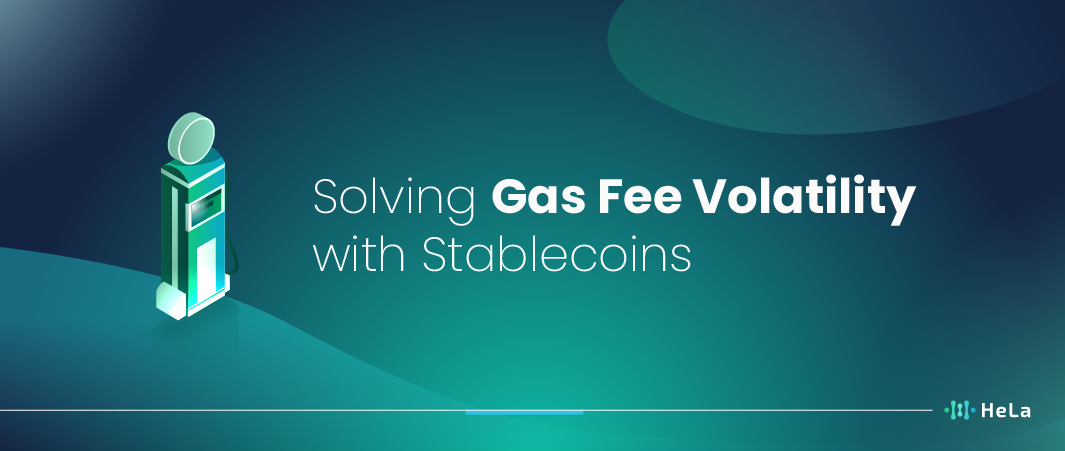Why Gas Fees?
For every onchain transaction, there is a charge required by the blockchain which serves as an incentive for the block miners, a charge for every transaction is given based on the supply side of every token economics and these gas fees serve to cover up the cost of operation in maintaining the nodes (computers) used in the process of mining these blocks to form a chain and complete a transaction.
Gas fees are paid into the blockchain to the fastest block miner irrespective of the transaction taking place. These transactions may include: Minting an NFT, paying out a cryptocurrency from wallet A to wallet B, or bridging from one chain to another.
This is analogous to traditional bank fees paid by TradFi users while carrying out transactions. It’s important to know that without a fraction of these gas fees paid to the block miners, the security of a blockchain cannot be ensured as there’ll be no network participant to secure the protocol. Recall, that every consensus mechanism adopted by any blockchain solely relies on the integrity of these block miners and they must receive incentives/rewards for this.
Different blockchains use different tokens/coins to pay for the gas fees of every transaction. Decentralized applications on the Ethereum ecosystem require ETH to serve as gas fees on the network before transactions can be carried out. Like transactions on the Hela chain, users placing transactions would need to have a required amount of HLUSD in their wallet to carry out transactions related to the Hela chain. In this case, both chains make use of their native token for the settlement of gas fees but on the contrary, ETH on the Ethereum chain is a volatile coin and HLUSD is a stablecoin.
Problems users experience due to gas fees

In as much as transactions cannot be carried out without gas fees and that is quite understood.
These fees paid to the block miners are not constant whereby a user could decide to pay $20 worth of a token for a particular transaction, come back the next time, and pay the exact amount of money for the same transaction. Typically gas fees do not have predictability. They fluctuate in price due to possible overcrowding on the memPool of a blockchain.
The Mempool is where all transactions are kept and miners get to pick transactions with priority based on how high the gas fees are. Hence, how much a user decides to pay to make his/her transactions to be carried out.
One of the subtlest factors that makes the prices of gas fees experience unusual and erratic price fluctuations is due to ZERO BACKING OF ASSETS.
Zero Backing of Asset Effect
 What’s the zero-backing effect?
What’s the zero-backing effect?
Cryptocurrencies are known for their high volatility based on the speculations that investors buy into and in this case, prices of tokens can rise at any time due to network congestion.
Due to this downside, users trade; buy, and sell with stablecoins because of their stability against frequent market fluctuations.
Stablecoins cryptocurrencies are created into the DeFi ecosystem to mitigate the instability that other assets face, this is mitigated by the pegging of these cryptocurrencies with a fiat-based asset or any other commodity with a regulated amount of supply in its economy.
Stablecoins are backed by reserves and issuance systems and pegged in the ratio of 1:1 which gives stability for its users.In this light, Stablecoins are given stability to escape price manipulations and this is used by HeLa Labs as a form of gas fee settlement to give its users a seamless experience when carrying out transactions on its Network. Users can then predict gas fees knowing how much to have in a wallet before processing transactions and also helps to avoid exploits such as frontrunning and wash trading.
Hela Labs and its stablecoin structure

HLUSD
This is the stablecoin of the Hela Network created for the settlement of gas fees within the ecosystem. HLUSD (Hela USD) is a fiat-collateralized currency that is backed to the USD dollar just like the Tether and Circle USD.
The Hela USD is minted and run on the official runtime. Despite the runtime that the Hela Network runs, customized runtimes on the Hela Network can be created giving room for developers to set a different native token for gas fees settlement.Hela Labs introduces more regional stablecoins to help users living in different regions where USD isn’t mainly used as a format of exchange to increase the adoption of stablecoins used as gas fees. These regional stablecoins include HLSGD and HLEUR. These stablecoins can be directly used as a settlement for gas fees without having to convert your national corresponding stablecoin.
A Stablecoin Devaluation Issue
Stablecoins are pegged directly to fiat currencies and these currencies are open to inflation. Due to the insurgence of inflation, these stablecoins are affected and most importantly computer nodes that validate transactions are not rewarded enough.
To address this issue, the governance system would carry out a voting system to balance user expenses against node rewards and till the inflation rate reduces, another round of voting will be carried out to rebalance users’ transactional expenses against node rewards.
Conclusion
Through the use of Stablecoins as gas fees, adoption into the ecosystem of Hela will be functional due to the predictability it brings into the everyday life of the blockchain users.
Users can now determine how much a transaction costs, how much is needed per time due to possible inflationary market action on fiat, and cross-region possibility through national stablecoins. It’s the beginning of giving blockchain users a new and endless experience and indeed bringing large-scale adoption into the Hela Ecosystem.
Disclaimer: The information provided by Hela Labs in this article is intended for general informational purposes and does not reflect the company’s opinion. It is not intended as investment advice or recommendations. Readers are strongly advised to conduct their own thorough research and consult with a qualified financial advisor before making any financial decisions.

Tim.0x
I am Tim, a technical writer with a strong background in writing about blockchain protocols; Layer-1s, Layer-2s and even rollups.
My writing skill is backed by my technical skills in JavaScript and Solidity as this helps me write well suited content for both developers and prospective users of any blockchain protocol.
- Tim.0x#molongui-disabled-link
- Tim.0x#molongui-disabled-link
- Tim.0x#molongui-disabled-link
- Tim.0x#molongui-disabled-link

